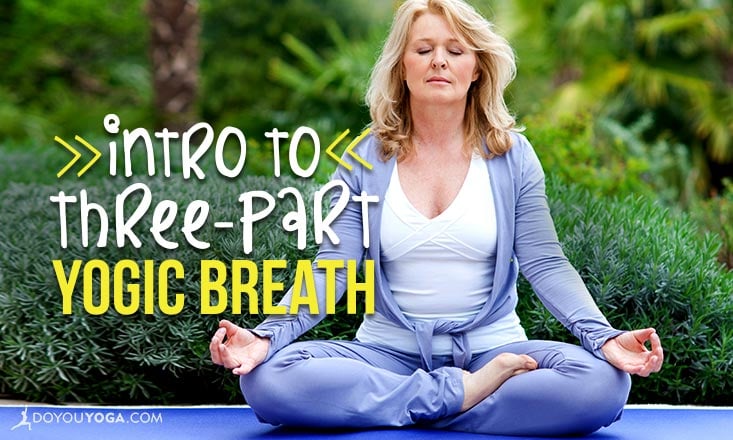Breathing in, I calm body and mind. Breathing out, I smile. Dwelling in the present moment, I know this is the only moment. ~Thich Nhat Hanh
On average, we take around 23,000 breaths per day. Much of this breathing can easily go unnoticed due to the activities of daily human life. What if we became more acquainted with our inhales and exhales?
Pranayama or yogic breathing is one of the eight limbs of yoga. Generally defined as breath control, “prana” refers to life force or vital energy. “Ayama” means to extend or to lengthen. Performed regularly, pranayama can balance the mental, physical, and spiritual bodies.
Three-part breath or dirgha pranayama is an accessible introduction to this transformative practice. The benefits of dirgha pranayama include:
- Calms the mind and body, reducing stress and anxiety
- Promotes full and complete breathing
- Increases oxygen supply to the blood
- Helps keep the lungs healthy
- Releases muscular tension
- Prepares for deeper meditation
A Beginner’s Journey into Three-Part Yogic Breath
- Sit on a blanket in Sukhasana or Easy Cross-Legged Pose. Root your sit-bones and feel your spine grow long as you lightly extend from the crown of the head. Soften your heart and your shoulders.
- Place your hand over your navel and take a slow, deep breath into your belly. Feel the belly inflate like a balloon as you inhale, and deflate as you exhale. Practice this for five breaths.
- Move your hand two to three inches above your navel to your rib cage. Feel the ribs expand as you inhale, and retract as you exhale. Practice this for five breaths.
- Place your hand below your collarbone, at the center of your chest, and inhale. Feel the chest spread as you breathe in, and withdraw on an exhale. Practice this for five breaths.
Linking and Expanding Your Three-Part Yogic Breath
- You may continue to use your hand as a guide or try the breathing exercise without. Breathe into the belly, feeling it grow. Keep inhaling as the breath expands to the ribs, and then the chest. Pause for a moment, completely filled with air.
- Exhale from the chest, then the ribs, and then the belly. Pause.
- Continue the same sequence, inhaling to the belly, the ribs, the chest, and so forth. Try for five to ten rounds. Work towards more repetitions if you feel comfortable.
- Once familiar with the exercise, add the breath to the back of the body. For example, as you inhale into the belly, also feel the breath expand to the kidneys. Continue inhaling to the back of the rib cage and the space between the shoulder blades. Exhale shoulder blades, back of ribs, then kidneys.
Notes and Recommendations
Witness your breath blossom without force or strain. It is useful to work on an empty stomach; finish eating two to three hours before you begin. Do not start a breathing practice if you experience asthma, shortness of breath, or have a heart condition.
Three-part yogic breathing is excellent for meditation preparation and best before asana. Invoke this exercise when you feel stressed or when your breath feels constricted. By cultivating a regular pranayama practice, your body and mind become more conscious of the present moment.


